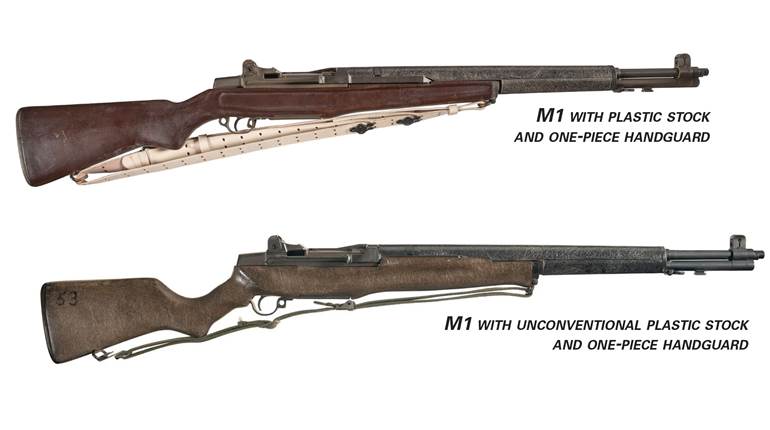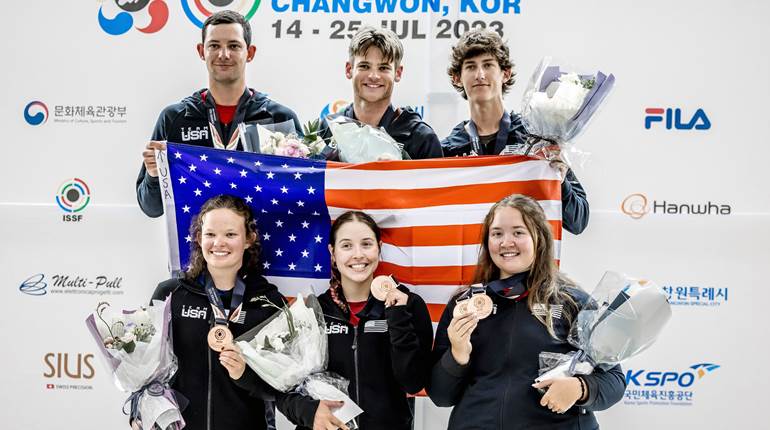
It simply has not become a popularized subject in the way that World War II has. Rarely is it even mentioned in the mainstream, and then when the subject does come up it is usually only with a trivializing reference to it being “the forgotten war.” Aside from the movies “Porkchop Hill” and “The Bridges at Toko-Ri,” and the television show “M*A*S*H,” the Korean War is not often acknowledged in the world of popular entertainment. Even its official memorialization is faint in comparison with other moments in our national historical narrative.
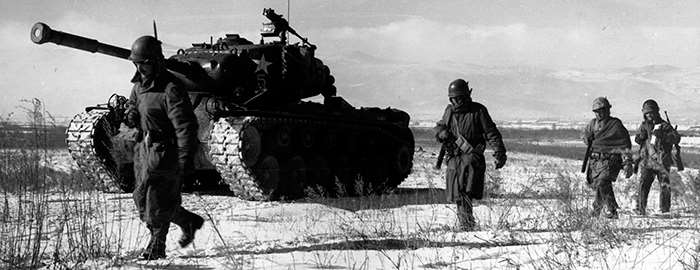
Maybe this is because the Korean War did not leave us with footage of celebrating civilians greeting U.S. troops in the streets of liberated cities. Or maybe it is because our war in Korea did not resolve decisively as either a victory or defeat, but instead ended with the armistice that still divides that faraway peninsula to this day. Whatever the case, we just don’t turn to the Korean War’s history, as often, or with as much enthusiasm, as we do the Second World War’s history, despite the fact that it involved combat every bit as intense, in conditions every bit as difficult. Seldom do we dwell on the subject long enough to call emphasis to the individual stories of the men who fought that war, but fight it they did.
John “Red” Parkinson was born in Brooklyn, N.Y., in 1928, and he is one of those men who survived the frozen ordeal of combat around the Chosin Reservoir during the closing days of November and opening days of December 1950. During that time he fought with some of the most famous infantry arms the U.S. Marine Corps has ever issued, and—perhaps more importantly—he found religion in a place called “Hell Fire Valley.”
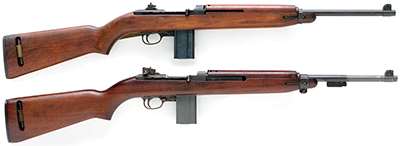
In December 1948, Parkinson joined the U.S. Marine Corps and shipped out to recruit training at Parris Island, S.C., in February 1949. While at Parris Island, he qualified with both the M1 Garand rifle and the M1911A1 pistol. With that experience behind him, Parkinson was assigned to the 6th Marine Regiment. War broke out in June 1950 and, at that time the 6th Marines was more than 5,000 miles away in the Mediterranean, so it had to reposition to Korea via the Suez Canal and Japan. Once there, Parkinson was reassigned to the Weapon’s Company of the 3rd Battalion of the 7th Marine Regiment (or “3-7”) as an anti-tank rocket launcher gunner.
The 3-7 came ashore at Inchon the week after the successful amphibious landings there, and swiftly joined a fight that, for a time at least, went well for United Nations forces. In November, the 1st Marine Division moved north from Hungnam into the valley stretching between the villages of Koto-ri and Hagaru-ri at the southern end of the Chosin Reservoir. Once there, the Marines of 3-7 began to see herds of deer bolting from the woods, and they also began picking up Chinese radio transmissions. Both of those ominous signs indicated the possibility that the 1st Marine Division was about to fight not the North Koreans, but the Chinese People’s Liberation Army (PLA). Just a few weeks prior, Gen. Douglas MacArthur had boasted that the fighting in Korea would be over by Thanksgiving, but as the 3-7 moved up into the area around the reservoir, this promise gave way to ominous developments with the approach of winter.

November brought a bitter cold that the Marines of the 3-7 were simply not equipped to deal with. Nighttime temperatures plunged to -42° F, which was painful for men still wearing their summer utilities. Though they had, by that time, been issued parkas and shoepacs, the men carried only a single USMC blanket to help stave off the frigid low temperatures. But these icy conditions didn’t just affect the men—they affected the infantry arms, too. Within 3-7’s Heavy Weapons Company, each M1917A1 .30-cal. heavy machine gun was filled with anti-freeze instead of water. Also, the 81-mm mortar gunners quickly found that the frigid conditions warped and bent the baseplates of their tubes to such an extent that they could no longer be used. Because the frozen ground would not give way in the same way that unfrozen ground would when the mortars were fired, each mortar round transmitted the full recoil impulse directly into the baseplates, with dire results.
The Marines of 3-7 also found that, because of the temperature sensitivity of the lubricating grease they were issued, the M1 rifle’s bolt face would regularly freeze to the barrel. While the problem could be solved easily enough by placing the rifle’s buttstock on the ground and then kicking its operating rod handle with the heel of a boot, this situation nevertheless provides revealing insight into the harsh reality of a Korean winter.
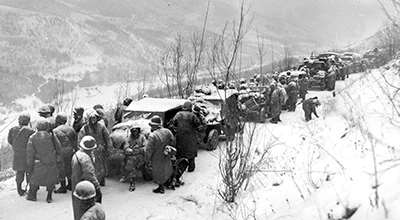
Despite this singular issue, Parkinson has nothing but praise for John Garand’s masterpiece. In a recent interview, he described the M1 as being, “… the most fantastic weapon the USMC ever had—it never failed you.” Indeed, the Garand opened an all-new chapter of its impressive combat legacy during intense battles under great adversity in Korea. For all of his admiring opinions of the M1 rifle though, Parkinson has nothing complimentary to say about the M1 carbine. From the time the battalion first arrived in Korea in September until early November, he carried a carbine as the gun he would use when not firing the M20 3.5" Rocket Launcher—also known as the “Super Bazooka.” During those weeks, his experience with that arm did not produce favorable memories: “The M1 carbine hardly ever worked,” he later recalled. Today, he even goes so far as to refer to it as “useless,” saying “it had no firepower.” One particular incident settled the issue for Parkinson once and for all. He fired four shots into an escaping enemy soldier, but the .30 Carbine bullets only made him stumble momentarily before he continued running. Another Marine then stepped forward with an M1 rifle and fired one shot that dropped the man like a sack of potatoes. With that, Parkinson grabbed his carbine by the barrel like a baseball bat and proceeded to bash it against a nearby tree until it was no longer serviceable. He then threw the shattered little rifle into a roadside ditch and shouted the words, “Piece of junk!” By the end of the day he had gone to a field hospital where spare M1 rifles could be found, and he never carried an M1 carbine again.

Parkinson’s negative opinion of the M1 carbine notwithstanding, that arm, and every other one issued to a Marine infantry battalion in 1950, would be put to the test during a human wave assault on 3-7’s perimeter on Nov. 27, 1950. That night, the 89th Division of the Chinese People’s Army attacked the battalion’s position northwest of Yudam-ni in numbers so great that one Marine thought he could feel the earth shaking as they surged forward. To another Marine, it seemed like the “biggest mass of men” he had ever seen—a regular “stampede of buffalo” approaching his foxhole. After a preliminary mortar bombardment to soften-up the Americans, the pounding feet of 3,000 Chinese soldiers could be heard through the darkness approaching 3-7. Their attack came during the predawn hours for one very good reason: a night attack would nullify the advantage that U.S. units enjoyed by virtue of artillery and close air support. All along the line small arms began firing. As the fight began, the bolts on carbines and even BARs were found to be frozen in place, giving some Marines yet another adversity to contend with right at the outset of the battle.
 For the men of the Weapon’s Company, everything from machine guns to pistols was leveled against the onrushing enemy. Soon, Marines were running out of ammunition, and the barrels of the Weapons Company’s M1919A4 .30-cal. machine guns were beginning to glow from overheating. Because of that, gunners had to stumble around in the dark to find spares and install them in the M1919—an exercise that was difficult even in broad daylight. All the while, the enemy kept coming: “You’d kill 100 and another 100 would come up,” one Marine remembered. Despite the wall of fire coming from 3-7, the Chinese began to overwhelm the line, and it looked like it was about to be overrun.
For the men of the Weapon’s Company, everything from machine guns to pistols was leveled against the onrushing enemy. Soon, Marines were running out of ammunition, and the barrels of the Weapons Company’s M1919A4 .30-cal. machine guns were beginning to glow from overheating. Because of that, gunners had to stumble around in the dark to find spares and install them in the M1919—an exercise that was difficult even in broad daylight. All the while, the enemy kept coming: “You’d kill 100 and another 100 would come up,” one Marine remembered. Despite the wall of fire coming from 3-7, the Chinese began to overwhelm the line, and it looked like it was about to be overrun.
 Although the fight quickly devolved into a close-quarters exchange, the enemy tide broke when Marine reinforcements arrived just in time. Parkinson had survived the most difficult night of his life and, in the days that followed as 3-7 conducted a fighting withdrawal south through Toktong Pass and onward to Hagaru-Ri at the southern end of the reservoir, his outlook on life began to change. During the height of the November 27 battle, when the battalion was surrounded and things looked bleak, another Marine had told Parkinson to pray to God and he would answer. With a Gideon’s Bible that he had been given before coming to Korea, Parkinson began reciting the 23rd Psalm. Facing “the shadow of death” in the valley between Hagaru-ri and Koto-ri—a piece of terrain the Marines had nicknamed “Hell Fire Valley”—he prayed out loud: “God don’t let me die, not here. I just want to see the sun come up one more day—just give me another day.”
Although the fight quickly devolved into a close-quarters exchange, the enemy tide broke when Marine reinforcements arrived just in time. Parkinson had survived the most difficult night of his life and, in the days that followed as 3-7 conducted a fighting withdrawal south through Toktong Pass and onward to Hagaru-Ri at the southern end of the reservoir, his outlook on life began to change. During the height of the November 27 battle, when the battalion was surrounded and things looked bleak, another Marine had told Parkinson to pray to God and he would answer. With a Gideon’s Bible that he had been given before coming to Korea, Parkinson began reciting the 23rd Psalm. Facing “the shadow of death” in the valley between Hagaru-ri and Koto-ri—a piece of terrain the Marines had nicknamed “Hell Fire Valley”—he prayed out loud: “God don’t let me die, not here. I just want to see the sun come up one more day—just give me another day.”
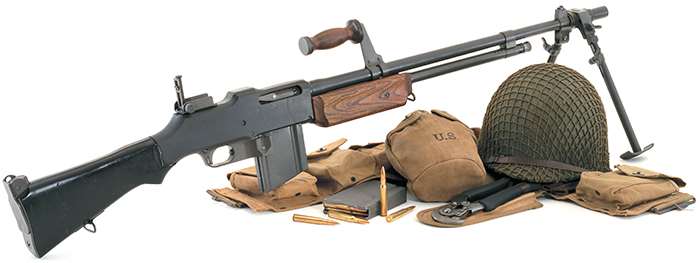
John “Red” Parkinson made it through the subsequent withdrawal and the eventual evacuation of U.N. forces at Hungnam the following month. He survived the war and received an honorable discharge from the Marine Corps as a staff sergeant in 1954. The faith that he found at the Chosin Reservoir stayed with him, and he eventually joined the Gideons himself in 1975. The combat that he endured has stayed with him too. Each year on November 27—the anniversary of the battle at Yudam-ni—he climbs a hill near his farm in the predawn darkness and remembers what he survived.
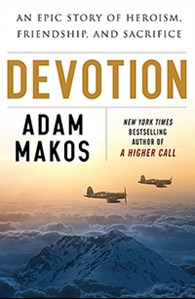 Devotion
Devotion
The combat odyssey of “Red” Parkinson is just one of many riveting storylines in the new book Devotion, by Adam Makos, NRA member and author of the bestseller A Higher Call. Devotion alternates between the cockpits of the U.S. Navy F4U Corsair pilots in the air and the Marines on the ground at the Chosin Reservoir. The acts of heroism are stirring. We meet real-life figures such as Cpl. Ed Coderre, who stands with his machine gun crew as its overrun by a human wave of Chinese troops. We watch Lt. Robert Reem, an officer with a new bride back home, jump on a grenade to save his men. And we ride along with Lt. Tom Hudner on the most legendary rescue mission of the Korean War, when Hudner intentionally crash-landed his Corsair behind enemy lines to try to save a comrade. As the 65th anniversary of the “forgotten war” passes by unnoticed, Devotion seeks to shine light on these oft-overlooked heroes. As the author points out, our Korean veterans deserve a legacy greater than just the TV show “M*A*S*H*”. In Devotion, he delivers that and more. You won’t be able to put this one down. Available at local bookstores and from valorstudios.com.












